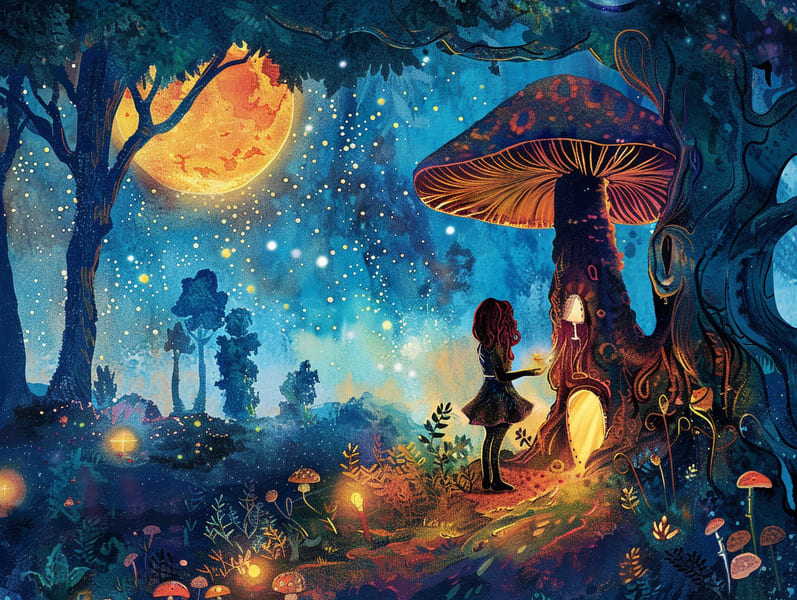The Origins of Fairy Tales and Its Persistent Beauty.

Old fairy tales have historical significance. These tales have been transmitted from one generation to the next ages before they were ever inscribed. They arose from a variety of cultures, including European traditions. They were initially shared among adults, often carrying themes and messages pertaining to the societal norms and beliefs of the time.
The renowned Brothers Grimm, Jacob and Wilhelm, were among the first to gather and publish many of these beloved stories. Their volume, "Grimm's Story Collection," included classics like "Cinder Maid," "The Bread Crumb Trail," and "Schneewittchen," which have since become mainstays in the world of beloved fairy tales. Similarly, the Danish author's enchanting narratives, such as "The Story of the Little Mermaid," and "The Duckling that Could," have won hearts worldwide, guaranteeing their place in the pantheon of iconic fairy tales.
Despite their age, classic fairy tales remain as impactful as ever, especially as nighttime stories for kids. These fantastical tales are now available in different formats, including vividly illustrated books, delightful animations, and web-based fairy tales.
Their enduring popularity can be connected to several magical reasons:
Life Lessons: Classic fairy tales often offer important moral lessons. Narratives like "The Tale of the Boy Who Cried Wolf" teach the importance of truth, while "The Tortoise and the Hare" exemplify the virtues of persistence and humbleness. These tales offer kids clear distinctions between correct and incorrect, helping to shape their moral compass in a mild yet important way.
Empathy and Awareness: Fairy tales frequently involve characters facing challenges and problems, encouraging young listeners to feel with their struggles and rally behind their triumphs. For instance, "The Tale of Beauty and the Beast" illustrates the virtue of appreciating inner worth to appreciate the real person of a individual, advancing perception and understanding.
Cultural Recognition: Many fairy tales are infused with the cultural contexts from which they developed. Delving into these tales can provide intriguing perspectives into different social structures, enhancing a sense of cultural understanding and knowledge.
Fantasy and Imagination: The mythical elements in fairy tales—enchanted objects—spark children’s dreaming abilities. These narratives take readers to imaginary realms, revitalizing imaginative ideas and a sense of wonder that continues a lifetime.
Ancient fairy tales are not only alluring but also enlightening. They function as delightful tools in developing various thinking and feeling skills in kids. When timeless fairy tales are told out loud, they enhance verbal development by offering new word meanings and intricate sentence structures. This practice also promotes hearing perception and attentiveness, as young readers remain attentive, excited to see what happens next.
Furthermore, reflecting on the themes and characters of traditional fairy tales can foster thought processes and intellectual skills. The young are taught get more info to spot patterns, foresee events, and realize cause and effect. These examinations also benefit young ones speak out their thoughts and feelings, advancing their emotional intelligence.
In today’s digital era, the presence of web-based fairy tales has made these fairy tales more acquirable than ever. Websites and web apps extend extensive collections of children's fairy tales that can be explored or listened via anytime, anywhere. Fairy tales read out loud are particularly prevalent, presenting an immersive method for young readers to enjoy these charming tales. Spoken stories and read-to-me stories carry characters and settings to life, often augmented by bewitching harmonies and background music that augment the narrative journey.
The timeless fascination of traditional fairy tales lies in their ability to adjust to new eras while sustaining their core values. Contemporary reimaginings of these narratives often spotlight more diverse figures and modern settings, making them relatable to today’s audience. However, the essential messages of heroism, kindheartedness, and truth remain unchanged, continuing to influence young listeners of all ages.
Fairy tales also offer a sense of security and predictability. They highlight a neat narrative with a distinct beginning, middle, and end, often concluding with the resolution of conflicts and the triumph of right over wrong. This assuredness can be consoling for young ones, proffering a sense of dependability in an always shifting world.
Traditional fairy tales continue to enthrall and coach new generations, maintaining their radiance and relevance in modern society. As nighttime stories for kids, they afford a perfect blend of fascination and comprehension, cultivating moral values, empathy, and creativity. The existence of online storybooks and the popularity of fairy tales read out loud certify that these classic fairy tales remain acquirable to new generations.
By holding onto and releasing these narratives, we continue to pay tribute to the rich tapestry of inventiveness and cultural heritage. Whether you are viewing a beautifully illustrated book, enjoying a online library, or hearing an voice book, the grace of ancient fairy tales is always within reach. These tales point out of the consistent strength of tales and its ability to tie us across time and space.
Be it you are viewing a vibrantly illustrated book, perusing a digital library, or listening to an sound book, the charm of classic fairy tales is always within reach.
These stories highlight of the enduring ability of narratives and its ability to unify us across time and space, weaving a spell that delights and instructs alike.